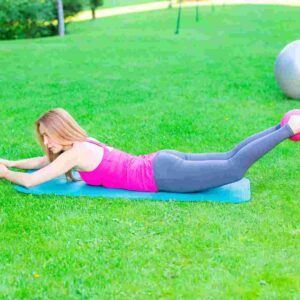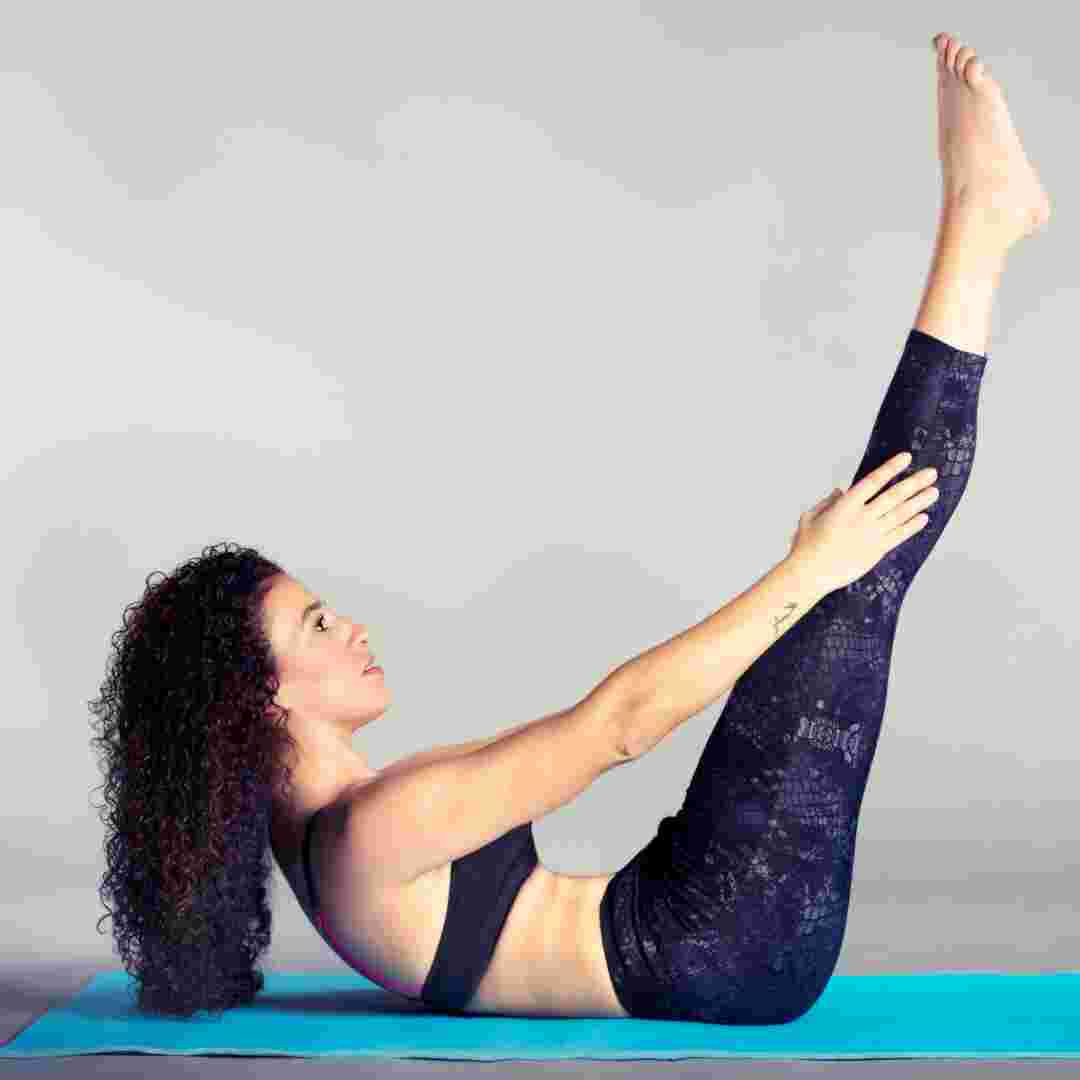Table of Contents
Introduction
5 Pilates Beginner Modifications
10 Pilates Props to Improve
Basic Pilates Exercises: Simplifying
Q&A
Conclusion
"Modify and simplify for a stronger you: Pilates practise tips."
Introduction
Introduction: Pilates boosts flexibility, strength, and fitness. It can be difficult for novices or people with physical restrictions. These techniques will make Pilates more accessible to everyone.
1. learn the basics: Before moving on to more difficult Pilates routines, learn the basics. This will strengthen your base and avoid injury.
2. Modify Pilates exercises: There are various ways to make them easier. A block or cushion can support your back during a roll-up, while a resistance band can help with leg workouts.
3. Focus on your breath: Pilates relies on breathing to keep you calm and focused. Take deep breathes in and out via your nose and mouth, synchronising your breath with your motions.
4. Take breaks: If you're exhausted or overwhelmed, rest. Resting and returning to activities later is better than pushing yourself and risking injury.
5. Work with a certified instructor: A Pilates instructor may assist you alter workouts and support your growth.
Follow these techniques to make Pilates easier and more accessible and enjoy its many advantages.
5 Pilates Beginner Modifications
Pilates is a popular exercise that strengthens core muscles, improves flexibility, and raises body awareness. It's a low-impact workout, but beginners may struggle with the moves and positions. However, beginners can make Pilates easier with tweaks.
1. Use Props
Using props to alter Pilates workouts is easy. Blocks, straps, and balls support the body and ease mobility. If you struggle with a stretch, use a block to support your body and reduce the intensity. A strap can also help you reach your feet during a seated forward fold.
2. Focus Breathing
Pilates relies on breathing to make workouts simpler. By focusing on your breath, you may relax your mind and body, making the exercises simpler. Deep, controlled breathing and thorough exhalation are key to Pilates. Focusing on your breath improves body awareness and muscle connection.
3. Start with simple exercises
Beginners should start with simple Pilates exercises and build up to more advanced ones. Basic exercises like the pelvic tilt, hundred, and single leg stretch help beginners create a firm foundation. As you get used to these workouts, you can add harder ones.
4. Adjust Movements
Modifying Pilates movements to your needs makes it easier. If you're having trouble with a workout, reduce the range of motion or use a prop. You can also make the exercises harder as you go. Weights or repetitions can be added.
5. Use a Pro Instructor
Finally, working with a professional instructor makes Pilates easier. A skilled instructor can help you alter exercises and provide assistance as you grow. They can also assist you acquire perfect form and technique to avoid injuries and maximise your workout.
Overall, Pilates is a terrific activity that can improve your health and fitness. It can be difficult for novices, but there are ways to make it easier. Using props, focusing on breathing, starting with simple exercises, altering motions, and working with a competent teacher, you may include Pilates into your fitness regimen and reap its advantages.
10 Pilates Props to Improve
Pilates is a popular exercise that strengthens core muscles, improves flexibility, and raises body awareness. Beginners and individuals with physical disabilities may find it difficult despite its low-impact nature. Fortunately, various props make Pilates easier and more accessible.
1. Pilates Mat
Any Pilates practise needs a mat. It cushions exercises and prevents slippage. A decent mat should be thick enough to support but not too thick to interfere with balance.
2. Yoga Blocks
Blocks can modify yoga movements and support persons with restricted flexibility. They can be placed under hands, feet, or hips to simplify exercises.
3. Bands of Resistance
Resistance bands can increase resistance to activities or support weaker athletes. Choose one that matches your fitness level because they have different resistance levels.
4. Pilates Ring
A Pilates ring, often known as a magic circle, is a small, circular prop that can add resistance or support weaker muscles. It can be positioned between thighs or arms to challenge muscles and increase workout.
5. Foam Roller
A foam roller helps relieve muscle tension and increase flexibility. It can support spine stretches and other exercises.
6. Stability Ball
A stability ball can add instability to activities, engaging core muscles and improving balance. It can also adjust exercises and support weaker people.
7. Yoga Strap
A yoga strap helps adapt workouts and support inflexible people. It can be wrapped around the feet or legs to stretch or assist certain movements.
8. Light Weights
Small weights like dumbbells or ankle weights can make activities harder. They can also support weak people.
9. Foot Corrector
A little foot corrector helps strengthen and flex the feet and ankles. It can adapt exercises or support mobility-impaired people.
10. Headrest
A head cushion can support the head and neck during back-bending activities. It might also make neck and back pain exercises easier.
Finally, Pilates is a terrific exercise that can be adapted to any fitness level or physical restriction. Pilates is easier and more accessible with props including a mat, yoga blocks, resistance bands, Pilates ring, foam roller, stability ball, yoga strap, light weights, foot corrector, and head cushion. Choose the suitable prop for your fitness level and see a trained Pilates instructor if you're unclear how to utilise them. Pilates may enhance your health and fitness safely and effectively with the correct props and supervision.
Basic Pilates Exercises: Simplifying
Pilates is a popular exercise that strengthens core muscles, improves flexibility, and raises body awareness. However, beginners may struggle with intricate movements and positions. Luckily, Pilates can be made more accessible to everyone.
Starting with the basics is crucial. Fundamental motions constitute the cornerstone of more advanced Pilates workouts. Mastering these basic movements will help you create a solid Pilates foundation and graduate to harder routines.
The pelvic tilt is a fundamental Pilates exercise. This exercise involves reclining on your back with bent knees and flat feet. You engage your abdominal muscles and lean your pelvis towards your ribcage, flattening your lower back against the floor. This exercise strengthens core muscles and posture.
Another basic Pilates exercise is the bridge. This exercise involves reclining on your back with bent knees and flat feet. Lift your hips off the floor, using glutes and hamstrings. This activity strengthens the lower body and stabilises.
After mastering the basics, you can use props in Pilates. Resistance bands, Pilates balls, and foam rollers supplement and ease exercises.
If you struggle with Pilates roll-ups, try a resistance band. Loop the band around your feet and grip the ends. The band resists rolling up, making it easier.
A Pilates ball can also help with balance during single-leg stretches. Use the ball under your lower back to stabilise your body during the activity.
Customising Pilates workouts to your needs makes it easier. Pilates routines can be modified for those with injuries, disabilities, or other limitations.
Keeping your knee bent instead of straightening it might modify leg circles for knee injuries. This change reduces knee strain and makes the exercise simpler.
Finally, listen to your body and take rests. Pilates is difficult and takes concentration. Take breaks when you're tired or overwhelmed to avoid injury and maximise your Pilates practise.
In conclusion, Pilates is a great workout that boosts strength, flexibility, and body awareness. Starting with the basics, using props, changing movements, and taking breaks can make Pilates more accessible to everyone. To maximise Pilates, listen to your body and move at your own pace.

Q&A
1. What modifications might I make Pilates easier?
Using blocks, belts, or balls to support Pilates exercises can modify them. You can also ease the activity by reducing range of motion or intensity.
2. Can I practise Pilates with injuries or reduced mobility?
Pilates may be adapted to different mobility and injury levels. Working with a trained instructor who can make adjustments is crucial for safe and productive practise.
3. Are there beginner-friendly Pilates exercises?
Yes, Pilates exercises including pelvic tilt, single-leg stretch, and spine stretch forward are beginner-friendly. These exercises can be tailored to individual requirements and skills to increase core strength and flexibility.
Conclusion
Conclusion: Start with simple exercises and work up to more advanced ones to make Pilates easier. Follow appropriate form and alignment and listen to your body to avoid overexertion. Use modifications and props as needed and consult a trained Pilates instructor for help. Your Pilates practise will improve and become easier with consistency and patience.


